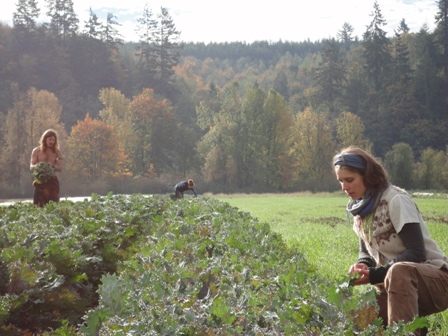How Can We Help?
Tips on Starting a New Gleaning Program with Thurston County Food Bank
You are here:
< All Topics

Tips on starting a new gleaning program.
- Take a volunteer management class, at least a full day in length, before you start putting your program together.
- Assess the following:
- Your organization’s ability to store fresh produce (How much can you bring in and how often? How are you going to train staff or volunteers on proper storage techniques?)
- Client needs. What types of produce do they want? Are you going to show them or provide them with information on how to use crops they are unfamiliar with preparing?
- Where are your volunteers likely to come from?
- What vehicles, tools, and supplies will you need? Send out a letter to common donors or post a flier.
- Eliminate as many in-between steps to getting your donors and volunteers in place as possible. From the moment they express interest, keep the ball rolling until they are engaged and committed.
- Use existing relationships to your advantage. If you don’t know farmers yourself, take someone with you who does when you scout for donors. If you have personal friends who like gardening and agriculture, get them to come glean with you.
- Research the crops you’ll be working with before you start gleaning. Don’t be caught uncertain whether or not to harvest something. For example: can kale be harvested after a freeze? Can plums be picked while they are under-ripe? Is it OK to harvest green potatoes? Knowing these things ahead of time will make a huge difference in how productive your gleaning events are.
- When possible, schedule gleaning to begin mid-morning, so volunteers don’t have to choose between sleeping in and participating.
- Find key organizations that can provide volunteers during the peak months and establish ongoing relationships with them.
Staying Organized
Planning a proper record keeping and archiving system will prevent lost files or information which may be valuable and useful at a later time.
- Bring an equipment checklist of things you will need for each glean and have them all in one place before you leave.
- Keep records of the gleans you do; include a volunteer sign-in, produce weigh-in, location, date, and even hours spent at the site can be useful for assessing the program later on.
- Keep track of your monthly totals for your records, and also let volunteers and donors know exactly how much produce was gleaned that month by sending out a newsletter, email, or blog update.
- Decide how you will archive or store the records of gleans and volunteers. Is it worth developing an archive binder, or would you prefer to scan and save the files on your site’s server, or is it dispensable?
“Cold Calling” Farmers
- Become familiar with farmers at your community farmer’s market. Approach farm booths and ask questions expressing interest. Make yourself friendly and familiar.
- Prepare an introductory packet of materials for your visit. Some farmers may be concerned about the process or might be unfamiliar with your organization. Some materials to have ready in your packet include a letter of introduction to yourself and the organization you represent, an example agenda for a day of gleaning, an explanation of limited liability for farmer based on your organization’s insurance and liability policy (something else to consider when preparing a gleaning program) and the Bill Emerson Good Samaritan Food Donation Act, providing further protection for growers and agricultural donors.


